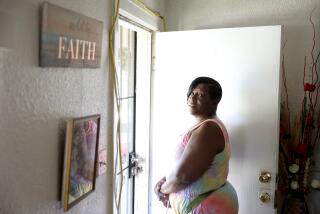Youth Agencies Hit Hard by Soaring Insurance Costs
- Share via
Executives of the national organizations of several youth service agencies--including the YMCA, Girls Clubs of America, Camp Fire Inc. and 4-H--said in Los Angeles Friday that the soaring cost of liability insurance is driving some of them to consider self-insurance or to cancel some of their more risky youth activities.
The cost of liability insurance to the nation’s YMCAs has gone from $5 million a year in 1983 to an “outrageously expensive” $27 million a year, Solon B. Cousins, executive director of the YMCA National Council, said at a symposium at the Sheraton Premiere.
He said the YMCA is setting up its own insurance system, adding, “We think we could save 20% with a good program of our own.” He also said the YMCA will consider whether eliminating certain activities that carry high risks might reduce the costs of such a self-insurance system.
The symposium was called to discuss challenges facing youth groups, including the insurance pricing problem.
A local Boy Scouts of America official, Dore J. Patlian, said the Scouts have already imposed a special $20-a-troop surcharge to help pay a national liability insurance bill that has gone from $2.7 million to $9.8 million in the last two years.
Even so, said Patlian, director of finance for the Scouts’ Los Angeles Area Council, the Scouts have had to drop such programs as aviation for Explorer troops and scuba diving and are considering doing away with sea scouting, because these activities have proved prohibitively expensive to insure.
David W. Bahlmann, national executive director of Camp Fire, said jumps of 100% or more in the cost of liability insurance for his 300 councils and a reduction of the types of coverages available had forced his group to abandon some horseback riding programs.
Bahlmann said Camp Fire is reevaluating its risk management policies and may seek legislation in various states aimed at setting a cap on damages for certain kinds of accidents.
Marge Gates, Girls Clubs of America national executive director, said that despite having 250,000 participants in its programs at 240 operating centers, the Girls Clubs have decided the organization is too small to self-insure. She said the organization is considering joining other groups in forming an insurance company to provide liability coverage at wholesale rates.
This is akin to what the U.S. Olympic Committee has recently done for itself and various national amateur sports federations.
The Olympic Committee, acting under the laws of Colorado, formed its own “captive” insurance company to provide liability coverage, although Baaron Pittenger, its assistant secretary general, cautioned Friday by telephone from Colorado Springs that the chief advantage thus far has been to make the insurance available, not lower its price. Pittenger said some Olympic groups had found themselves in the position of not being able to get insurance at any price.
V. Milton Boyce, 4-H assistant deputy director, said many chapters of his organization are affiliated with state universities and thus have retained their insurance.
Dr. Alan L. Rodda, American Red Cross vice president for human resources, said his organization is also headed toward self-insurance.
The Red Cross has never been sued in connection with its disaster relief activities, Rodda said. However, it has seen a sharp increase in its liability rates for its water safety instruction programs, and Rodda said its “biggest challenge” is expected with its blood bank operations.
Rodda said that because of the AIDS scare, the Red Cross expects to soon lose all insurance coverage for its blood programs and is planning to self-insure.
More to Read
Sign up for Essential California
The most important California stories and recommendations in your inbox every morning.
You may occasionally receive promotional content from the Los Angeles Times.













